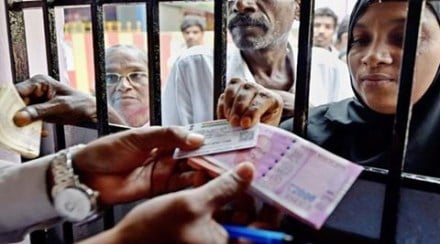When the prime minister announced the immediate black-listing of R500 and R1,000 notes in the economy on November 8, the nation was imbibed with surprise (and shock). Demonetisation has been touted as a starting point to curb the flow of black and counterfeit money in the country. It is a useful exercise to curb the demons of black money in an economy, especially when majority is stashed in the form of cash. The government, subsequently, introduced a new R2000 note as an addition to the existing currencies, while providing a window up to December 30, for individuals to convert the existing R500 and R1,000 rupee to the new legal tender.
It is widely perceived that there exists a large informal economy within the national economic framework of India. In an informal economy, the predominant driver of transactions is the money evaded from tax authorities. Traditionally, black money is normally converted into off-shore tax havens through hawala channels or re-invested in various forms of domestic/foreign assets (like gold, bullions, etc). The banned R500 and R1,000 notes account for approximately 86% of the total cash in the country. In the immediate short- to medium-term, this results in the economy transitioning to cashless digital transactions. This results in digital trail for each and every transaction providing comprehensive records of real money flow in the economy. In addition, the existing black money stashed in the form of R500 and R1,000 notes is either forced to boomerang back in legal channels, or risks becoming obsolete.
Perhaps, the sector that has benefitted the most is the banking and financial services sector. For the banks, that are reeling under NPAs and large loan defaults, the move has provided the necessary boost as retail cash holdings have increased in the short-run. This in turn has resulted in demand surge for bonds by the banks, indirectly resulting in a price rise, which normally would have happened in case of normal repo rate change. Finally, the revenue-deficit economy also gets a push as the move is expected to reduce inflation.
While this move is expected to curb black money stashed as cash, it also comes with a great cost. For instance, the impact of demonetisation is widely felt in the agriculture industry as farmers are, majorly, paid in cash. There is also the case of rural women who save money for the well-being of their children and household, facing the threat of their savings going obsolete. The farmers and household women represent samples of a wider population whose livelihoods revolve around cash-based transactions. To these agents, the real issue is not the actual note ban, but the “shoe-leather” cost accrued due to the waiting process in banks/ATMs. Also, this short-term reduction in liquidity is likely to stall the economic activity through a vicious cycle where, domestic demand is reduced, impacting employment negatively.
Demonetisation is an interesting move in the wake of increase in black money circulation. However, it is not yet clear whether black money in India is stashed as cash. In addition, the economy is merely in the starting phase of digitisation. Access to wide and fast internet is still a challenge in a large country where majority of the population thrives on cash-based transactions in rural areas. Given this situation, the move causes unintended suffering, but on it also strongly implies the country’s seriousness on curbing black money.
Despite having one of the lower tax-brackets in the world, tax revenues in India are not yet sufficient. The key motivation for storing black money by individuals and businesses is to avoid the ‘perceived’ high taxes on capital gains. Though demonetisation serves as a good start to clean up the mess, it does not address the deeper issue of tax evasion. There are many ways to address this issue. For instance, changing the rigid direct tax structure to a flexible transaction-based structure can help in reducing tax evasion. However, even in such a case (or any other reform dependent on digital transaction), the real challenge is not the reform itself, but providing the necessary infrastructure that can seamlessly integrate the transition process. The recent move by the government is a good example that indicates the need for adequate support structure before promoting an excellent reform. The demonetisation reform has had reactions and impacts at various facets of the economy. Only time will tell whether the move proves to be a corner stone in vanquishing the ‘demon’ of black money, or becomes a ‘demon’ by itself whose costs far outweigh the potential benefits.
Soumyatanu Mukherjee is assistant professor, economics area and Arvind Sampath is assistant professor, finance, accounting and control area, Indian Institute of Management, Kozhikode. Views are personal
